Explore Kanazawa, Noto and Wajima region of Ishikawa Prefecture, Japan

This week I’m off to explore a completely different side of Japan I’ve yet to visit, Wajima, Noto and Kanazawa in the Ishikawa prefecture.
Kanazawa is known for its rich cultural heritage, incredible cuisine sourced from local ingredients, and modern luxuries.
The city was founded during the Edo period by the Maeda family, which ruled over the Kaga Domain from Kanazawa Castle, which you can still visit to this day.
The family’s patronage of the arts and crafts led to the development of a thriving artistic community in Kanazawa, which is still evident in the city’s traditional arts and crafts scene.
The city is also home to many historical attractions, such as restored residences and districts, as well as modern museums.
Some of the top things to see and do in Kanazawa include visiting the Nagamachi Samurai District, exploring the Higashi Chaya District, and admiring the Kenrokuen Garden.
I hope this introduction gives you a good idea of what is in store for Kanazawa and the rest of the region. Let’s explore the area of Ishikawa prefecture!
Getting to Kanazawa from Tokyo, Japan
It’s rather easy to get to Kanazawa from Tokyo as you will find a direct Shinkansen connection from Tokyo station to Kanazawa, with a train journey time of around three hours. A wonderful option if you happen to be using the Japan Rail Pass.
Alternatively, you can fly domestic to Noto from Tokyo Haneda domestic terminal with ANA Airlines, and journey time is just under an hour. This way you can reach Ishikawa prefecture and explore Noto and Wajima on your way to Kanazawa. A great way to explore the rest of the prefecture.
The highlight of flying for me was whilst landing when you can start to see the rugged mixture of the landscapes from above.
The beautiful mixture of wild forests and coastal sea perfectly merge offering this unique scenic view that I’ve yet to see in Japan. Enjoy the journey to Kanazawa!
Visit the Wajima Nuri Lacquer studio
The first visit of my trip was to the Wajima Nuri Lacquer studio.
Here you can visit the gallery and studio to learn about the process of lacquer and the many products that you can create using materials sourced from the local area.
This time-honoured tradition is a difficult process to maintain, and at the Wajima Nuri Lacquer studio, they plan to keep this tradition going and protected for many years to come.
A wooden lacquered bowl can last for an extremely long period and the process of adding the different layers of lacquer can take up to a year to complete.
The process is time-consuming and requires a difficult technique that takes time to learn how to apply correctly. Over the years they have learned unique methods to create amazing designs and effects that also add practical elements to the items such as scratch resistance.
What you are left with is a beautiful product that will last forever and be a prized possession in your collection of household items.
It’s great to see this sort of craft being kept alive and still being in demand across Japan for the future to come.
If you’re passing by the studio, be sure to stop and have a look at the many incredible items they have for sale all using the traditional lacquer technique.
Lunch at Wajima restaurant Tone
For lunch, you should stop off at Wajima restaurant Tone, a locally run restaurant serving dishes sourced from local ingredients.
The restaurant was set up by a local woman who wanted to create employment opportunities for themselves in the local area as most of the employment was heavily male-dominated fishing roles.
The set lunch menu was super tasty with a wide variety of dishes including puffer fish, which is a locally sourced fish and a unique experience to try whilst in Japan.
Very impressed by how tasty all the vegetables and fish served were and would return here again for sure.
Senmaida Rice Terraces
Looking for a spectacular coastal view of Wajima? Be sure to head to Senmaida Rice Terraces for a wonderful observation point.
This landscape and popular photo spot changes rapidly throughout all four seasons, so it’s a spot that you can return to over time to see the different view from snowfall to harvesting season.
There’s also a gift shop where you can meet 92-year-old local women divers who collect shellfish from the sea every day. They serve great ice cream too!
Check out the Agehama-style salt fields
Looking for something unique to the area? Be sure to head to the Agehama-style salt fields.
They’ve been harvesting salt here using traditional methods for hundreds of years.
Good luck carrying the seawater up the side of the cliff as this challenge is done manually with buckets and has to be done over 70 times per day to fill a salt field.
The salt is then boiled up in a big pot until it is crystallised into its final form.
The salt has a unique and interesting taste to it, almost smokey, and is a brilliant way to enhance some of your cooking dishes such as tempura.
Be sure to purchase a bag of salt to remind yourself of your time in the area, an ideal local gift to bring with you back home.
Regional food tour alongside restaurant Tominari
It’s not every day that you get to go fishing with the chef of a Michelin-star restaurant, but that is what restaurant Tominari is all about.
Not only do you get an incredible eight-course meal in the evening, but you can also go out and source some of the fish whilst learning about the land and your surroundings.
First, we went to go and check the crab cages on the banks before heading out to the river stream to catch some fish with a net.
We learned that the chef of restaurant Tominari went to Osaka to learn how to cook, and when he returned to his home town years later, he noticed fewer fish in the river compared to his childhood and wanted to take action and do something about it to bring the fish numbers back to the area.
He set up some conservation events to help bring the population of fish back into the rivers.
Once you’re done for the day and you’ve caught enough fish for dinner, you can return to his restaurant Tominari for an incredible Michelin one-star meal.
I loved this dining experience as it was wonderful to try all the different dishes made using local ingredients sourced from the area such as wild mushrooms and fish that we caught earlier in the day.
Would highly recommend it if you’re looking for a top dining experience in the area with wonderful hospitality.
Stay at hotel Route Inn Wajima
If you want to visit the fish port in Wajima early in the morning, stay at Hotel Route Inn Wajima, which is within walking distance.
The hotel has cosy rooms with access to a public bath and breakfast buffet – it’s perfect for your stay in Wajima.
See the morning catch and fish auction at Wajima fish port
I can’t think of many reasons why I would wake up voluntarily at 05:00 am but this is the time that the Wajima fish port kicks into action as locals prepare for the early morning fish auction.
Before it even begins, it’s already over. The auction is done rather swiftly, and the regulars know and understand how it works.
It’s interesting to watch from the sidelines as numbers are thrown into the air and buyers lock in the fish that they’re after or have been asked to fetch for a fair price.
Once the numbers have been called and sales locked in, all the fish are boxed up, packed away and off they go around the local town and prefecture to be sold elsewhere.
We caught one lady who got a good price on a large box of fresh shrimp. She was the first I spotted at the market and the first to also leave with her cart. The local fish auction is part of her daily routine and she knows what she’s after for her customers.
She splits the shrimp up into smaller pallets and sells them for 500 yen each, and she even pre-peels some of the shrimp for her older customers who struggle to do it themselves. She says that she includes this service in the price as they are frequent customers and good for business.
Around the corner, I spot another local, a cat patiently waiting for breakfast scraps to fall on the floor.
The fish auction is just part of a daily routine for some in the town of Wajima. It’s not even 07:00 am yet and the day has already started for some.
We head for Kawabata Ryokan where breakfast has been prepared with fresh fish purchased at today’s auction.
Normally this amount of fish would be too much for me this early in the day, but how can you turn down the opportunity to try such fresh sashimi?
Kanazawa Daichi farm visit – Kahokugata
A unique experience to try in Kanazawa is to visit an organic rice field and try a rice harvesting experience like the one at Kahokugata Daichi farm.
The farm grows many of its crops using traditional organic methods, such as not using any pesticides or chemicals on what they grow.
The rice farm is also home to a stork nest tower, which has recently been successfully reintroducing new storks into the area’s wildlife.
Farming is a great way to connect tourism with local communities and gives you a chance to learn about how local foods are grown and sourced through a rice harvesting experience.
Go out to the field with your harvesting tools and collect batches of rice by clustering them together.
In the end, you have the opportunity to try the local rice by enjoying onigiri tasting. I tried a spicy pork one which was tasty.
Omicho market tour and Japanese cooking workshop
A great way to explore a new city is through its food. The perfect place to start in Kanazawa is the Omicho market which sells a wide range of fish, meat, fruits and vegetables.
To explore the market, I teamed up with a local guide who offers an Omicho market tour and a Japanese cooking workshop in her cooking studio.
This way you can walk around the market, learn about local ingredients from a local guide, and then head back to the studio with your purchases and learn how to cook some new Japanese dishes.
I was most impressed by the mini eels that you can buy cooked on a stick and dipped into a sweet tangy sauce. You must try one if you’re visiting the Omicho market. They’re very tasty and only around 120 yen per stick.
Moving on to the cooking workshop part of the tour, it was fascinating to learn about the foundation of Japanese cooking, which is the broth called Dashi. It serves as the basis for many Japanese foods. Mostly built up of boiled kelp and fish shavings, it was interesting to make.
I had the most fun learning how to make a traditional Japanese egg omelette, which is a unique process in itself, and I can’t wait to buy a pan and try my luck when I’m at home.
Then, of course, there’s the fun part of getting to eat all that you’ve cooked during the workshop for lunch, which is a wonderful bonus.
Stay at hotel Sainoniwa Kanazawa
Looking for a place to stay in Kanazawa? Be sure to have a look at Hotel Sainoniwa Kanazawa.
This stylishly designed property is the perfect location to rest your head after exploring the city.
The staff are extremely helpful and will make your stay relaxing and worry-free every step of the way.
The buffet breakfast is also a mixture of Japanese and Western so you have many different dishes to choose from.
I also enjoyed the bath onsen area which is included in your stay for guests and a great place to relax.
I was most impressed by the clean and spacious design of the overall property, which adds a wonderful Japanese design element to your stay in Kanazawa.
Enjoy a dining experience at A la ferme de Shinjiro
Enjoy an evening of wonderful food experiences at A la ferme de Shinjiro. Located in the city of Kanazawa, they have a micro-winery in the basement and make their wines on-site.
The restaurant has a one star Michelin-award and serves French-inspired cuisine. Many of the ingredients are locally sourced, even from the Kahokugata farm that I visited earlier today.
Let your taste buds go on a journey of flavours that pair perfectly well with the wine that is sourced from the basement. The local crab was excellent and a must-try.
Traditional craft studio visit to Nishimura Shoitsu
Experience a local traditional craft studio by visiting the Nishimura Shoitsu workshop and storefront.
Visiting Nishimura Shoitsu feels more like visiting a home than a store which has maintained an authentic Japanese home feel.
As you enter the shop front and take your shoes off, you’re invited into the welcoming room which resembles more like a traditional Japanese tea room.
All items that have been created in the studio are carefully placed around the studio, all serving a unique purpose and function as well as being on display.
This is exactly how a customer would enter and be greeted into the studio during the Edo period, and it was great to see the tradition still going to this day.
It was interesting to hear that broken items are repaired in the studio with pure gold to make the items unique again, so they can return to serving their purpose.
It was also wonderful to have a look at a 450-year-old lunch bento box and an old writing box, as well as see first-hand how a customer’s item is repaired. Well worth stopping by for a visit if you’re in the area.
Traditional Japanese lunch at Nishikawa
Why not enjoy a traditional Japanese lunch at guesthouse Nishikawa which offers a wonderful set lunch using locally sourced ingredients from the surrounding area?
The highlight for me was the incredible view overlooking Kanazawa from the second floor as well as the well-maintained Japanese gardens that you can explore below.
Kanazawa castle Autumn light festival TeamLAB
A visit to Kanazawa wouldn’t be complete without visiting the popular attraction, Kanazawa Castle.
One great way to experience the castle in the autumn time is to book a ticket for the TeamLAB light festival.
Walk around the grounds as the castle comes to life through a selection of light displays and art installations.
The evening offers hours of fun and interaction and is a unique way to experience the Kanazawa castle.
Thank you for reading my blog post about Kanazawa
Thank you for passing by my blog post all about Kanazawa in Ishikawa prefecture.
I hope you enjoyed the read and have loads of inspiration for planning your trip to this unique part of Japan.
If you have any questions, please feel free to message me and I will be more than happy to help.
Have an amazing time travelling around Japan and Kanazawa.





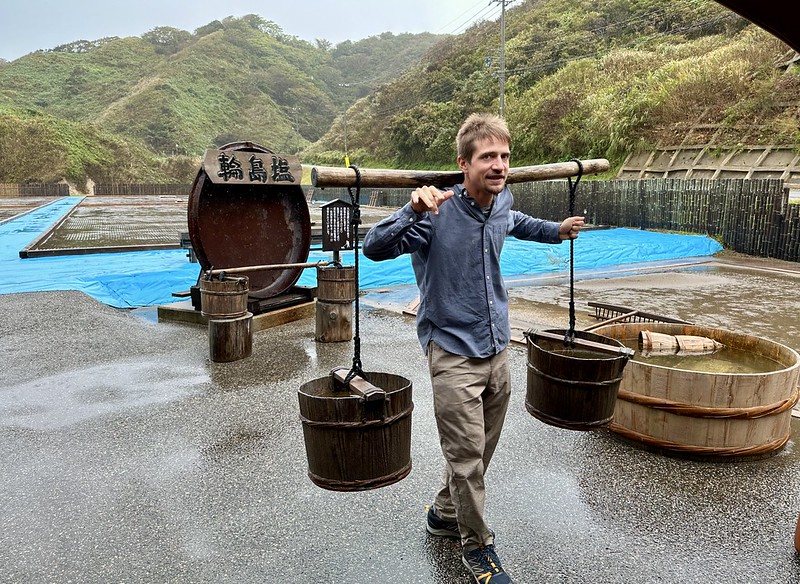
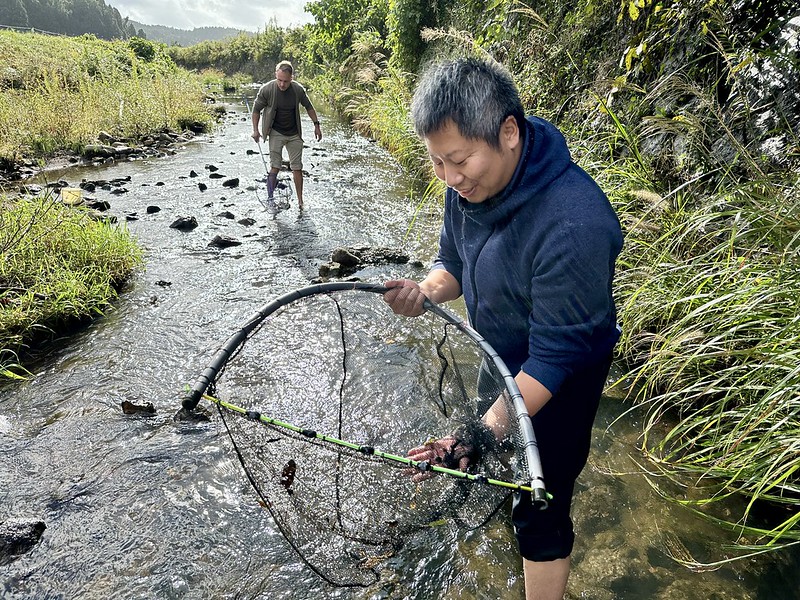

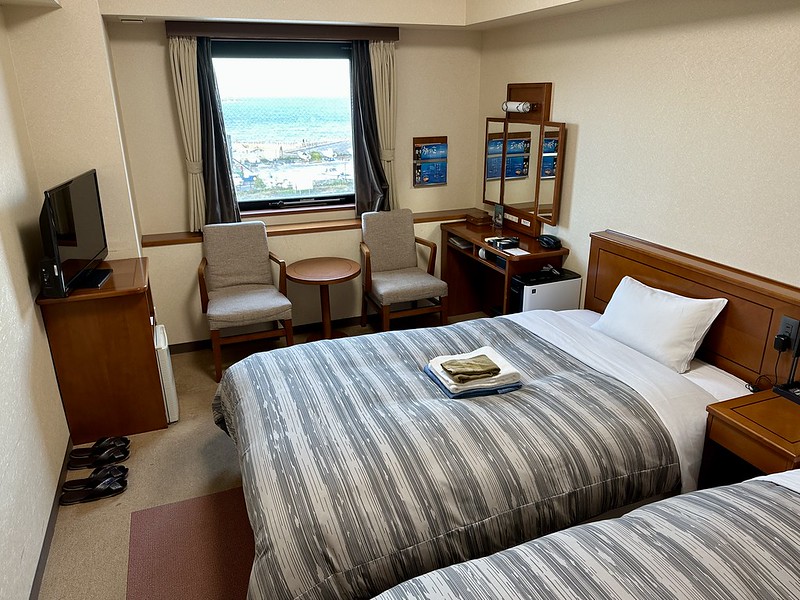

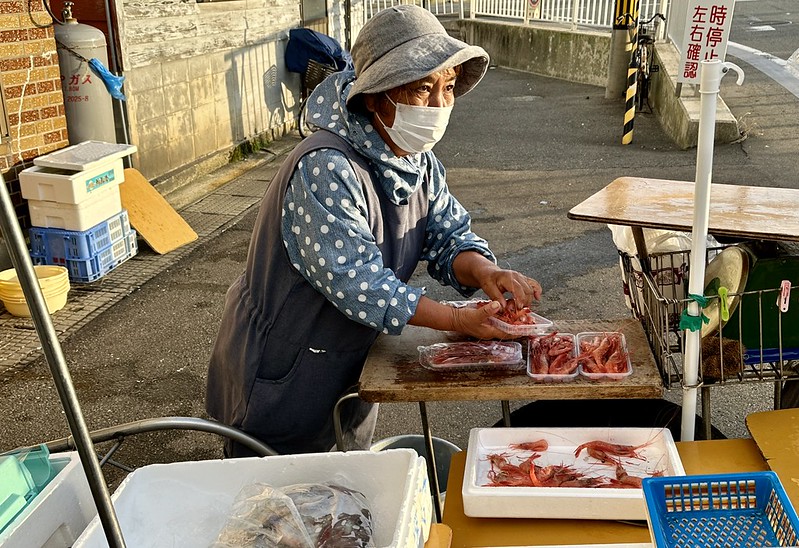

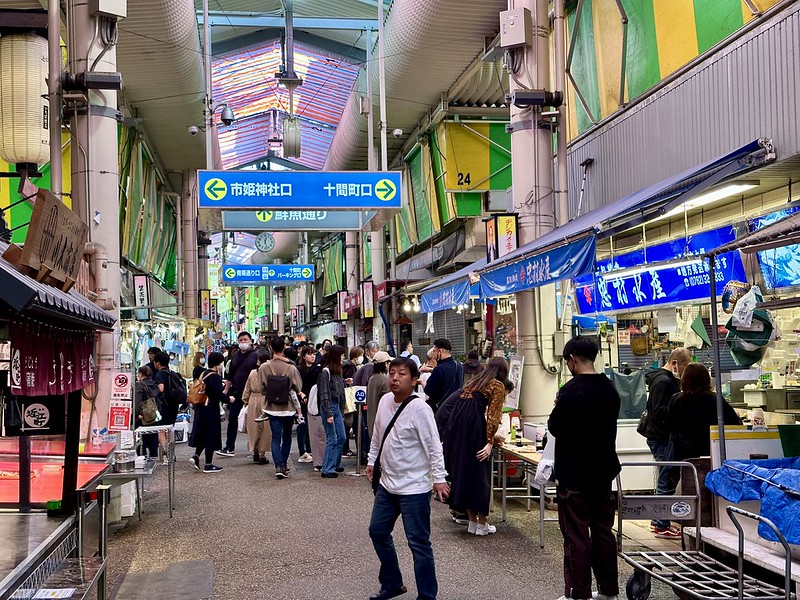



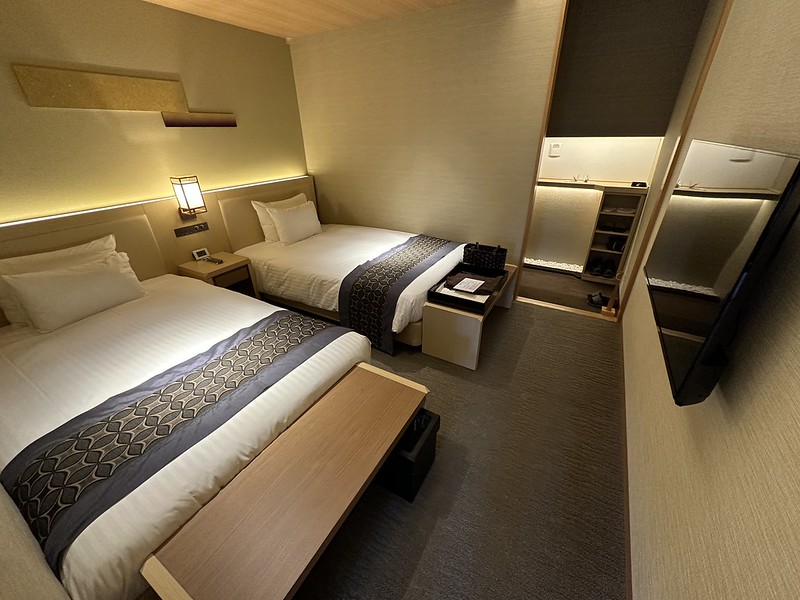
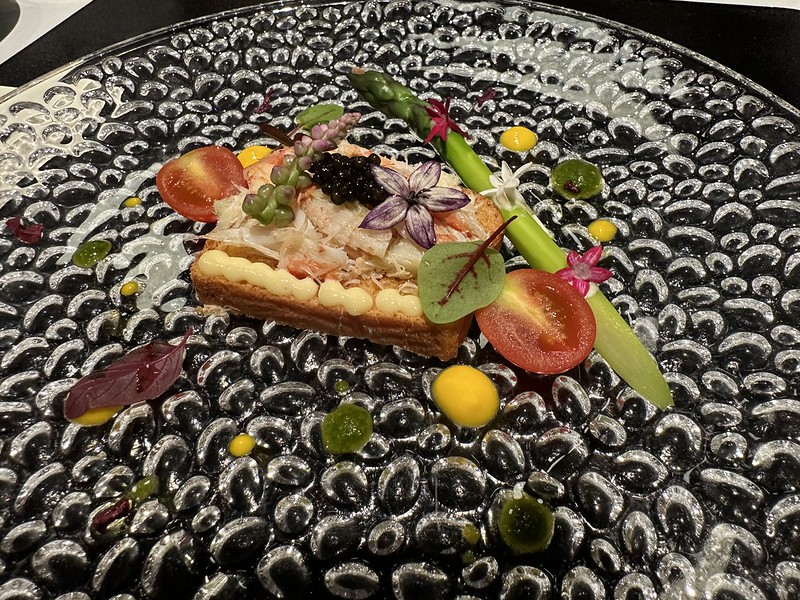
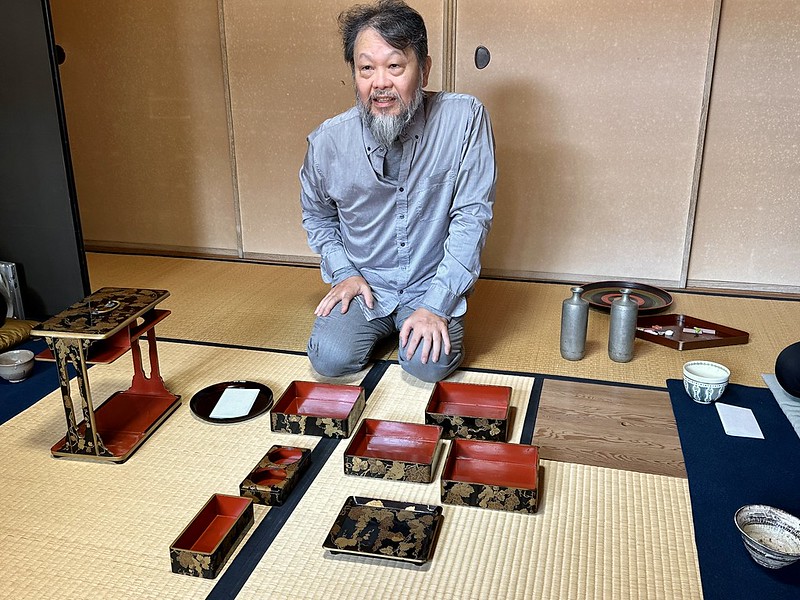
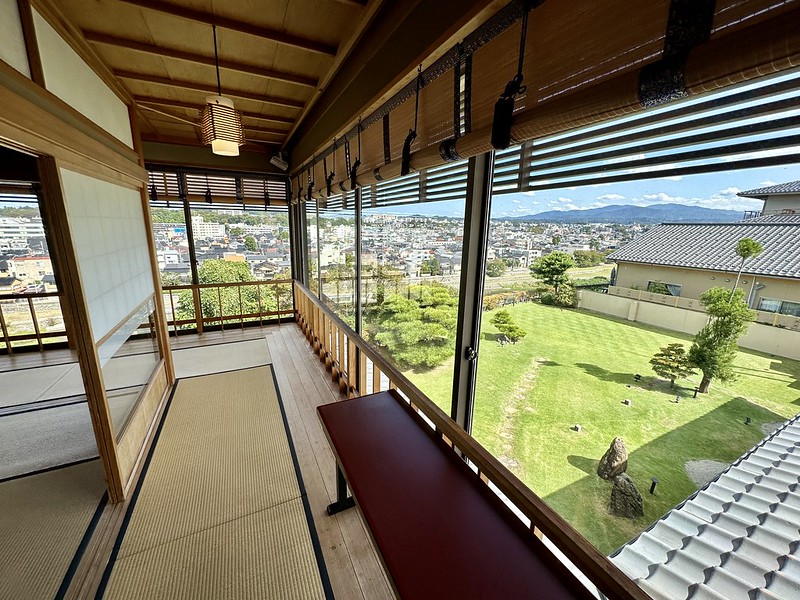
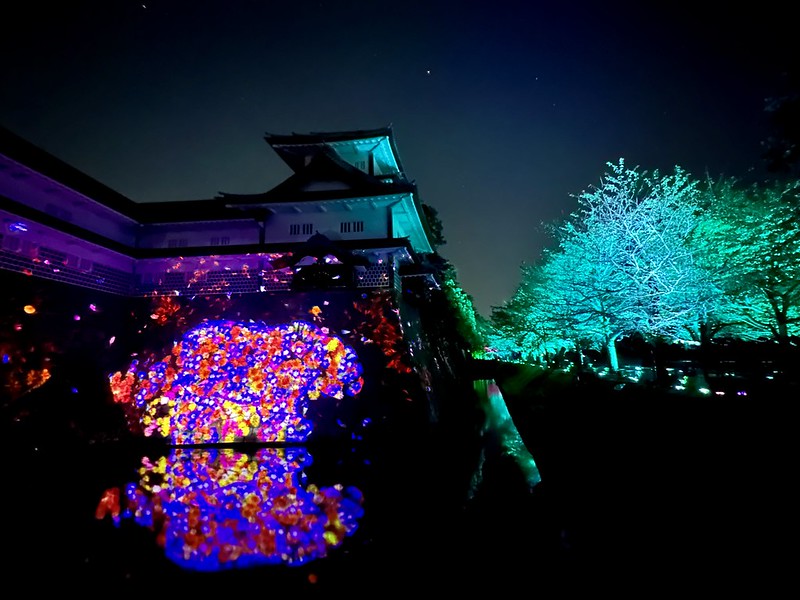
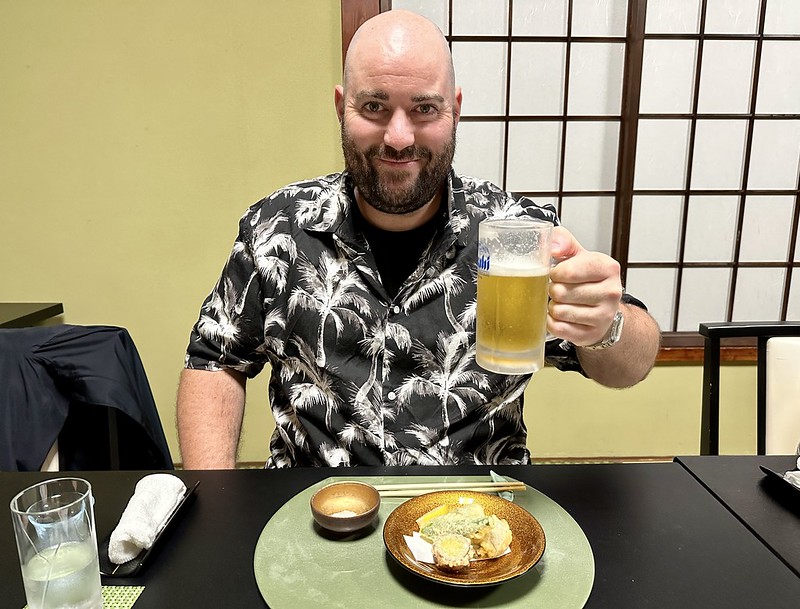




 Travelling the world, one adventure at a time. Follow Dave Brett, a solo adventure travel blogger on his travels around the world. A globe-trotting adventure travel blog featuring travel tips and advice, travel stories, travel videos and travel photography that will inspire your next trip abroad, and help you plan it too. To read more, please visit:
Travelling the world, one adventure at a time. Follow Dave Brett, a solo adventure travel blogger on his travels around the world. A globe-trotting adventure travel blog featuring travel tips and advice, travel stories, travel videos and travel photography that will inspire your next trip abroad, and help you plan it too. To read more, please visit: